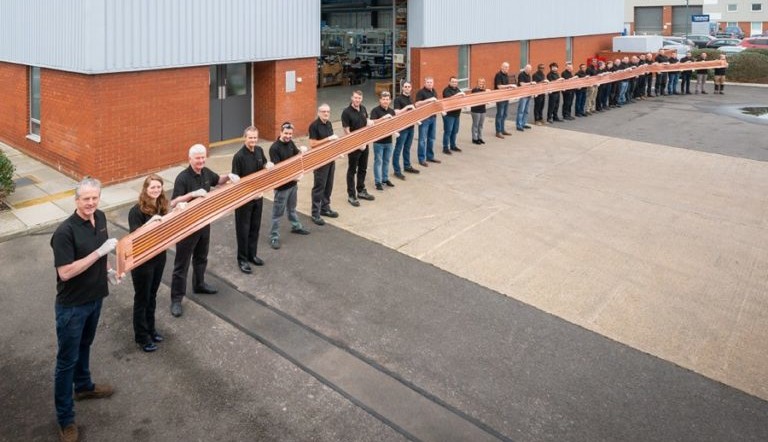World’s longest PCB measures 26 meters
April 01, 2019
on
on

UK company Trackwise has shipped a 26-meter (280') long multilayer flexible printed circuit (FPC), believed to be the longest ever produced, for distributing power and control signals across the wings of a solar-powered, unmanned aerial vehicle (UAV). The board is one of over 50 supplied by the fabricator into this vehicle.
The UAV’s flexible circuit is based on a polyimide substrate. The planar structure of the circuit dissipates heat better than conventional wiring, enabling higher current carrying capacity for a given weight of copper conductor. Printed manufacturing ensures circuit consistency, fewer connection points are needed so reliability is enhanced, and the FPC is easier to install than wire harnesses, reducing a vehicle’s assembly time and cost.
Photo: Trackwise
Longest PCB reduces cabling weight by 60%
The entire interconnect system (power and signal) of the vehicle is made of FPCs representing an estimated total systems weight saving of 60% over traditional wire harness. This will enable the UAV, which is being manufactured in the US, to achieve higher payload and/or improved speed and range. The FPCs are manufactured using Improved Harness Technology (IHT), a reel-to-reel manufacturing technique. By contrast, conventional FPCs are rarely more than two meters in length, primarily due to limitations of manufacturing processes.The UAV’s flexible circuit is based on a polyimide substrate. The planar structure of the circuit dissipates heat better than conventional wiring, enabling higher current carrying capacity for a given weight of copper conductor. Printed manufacturing ensures circuit consistency, fewer connection points are needed so reliability is enhanced, and the FPC is easier to install than wire harnesses, reducing a vehicle’s assembly time and cost.
Flexible PCBs have a bright future
Accordingto Trackwise CEO Philip Johnston there are many new applications emerging for long, lightweight FPCs. Aerospace is a natural fit as weight savings, high reliability and cost-effectiveness are critical. There is also growing interest from a variety of sectors including medical and automotive. As the number of electrical and electronic circuits in vehicles keep increasing, manufacturers are challenged to reduce vehicle weight to improve fuel efficiency. Electric vehicles in particular are accelerating this trend.Photo: Trackwise
Read full article
Hide full article


Discussion (1 comment)